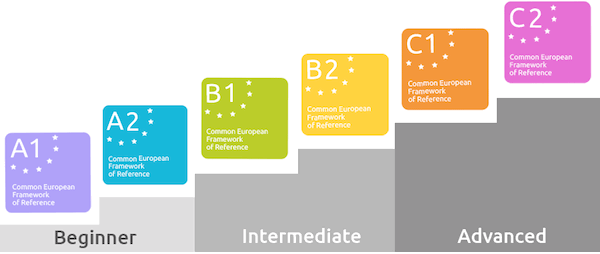What is Common European Framework for Languages (CEFR)?
CEFR
The Standardization of Language Proficiency

Introduction
The Common European Framework of Reference for Languages (CEF or CEFR) was put together by the Council of Europe as a way of standardising the levels of language exams in different regions. It is very widely used internationally and all important exams are mapped to the CEFR.

Theoretical Background
The CEFR divides general competences in knowledge, skills, and existential competence with particular communicative competences in linguistic competence, sociolinguistic competence, and pragmatic competence. This division does not exactly match previously well-known notions of communicative competence, but correspondences among them can be made.
The CEFR has three principal dimensions: language activities, the domains in which the language activities occur, and the competences on which we draw when we engage in them.
Language activities
The CEFR distinguishes between four kinds of language activities: reception (listening and reading), production (spoken and written), interaction (spoken and written), and mediation (translating and interpreting).
Domains
General and particular communicative competences are developed by producing or receiving texts in various contexts under various conditions and constraints. These contexts correspond to various sectors of social life that the CEFR calls domains. Four broad domains are distinguished: educational, occupational, public, and personal.
Competences
A language user can develop various degrees of competence in each of these domains and to help describe them, the CEFR has provided a set of six Common Reference Levels (A1, A2, B1, B2, C1, C2).

CEFR Levels
There are six levels: A1, A2, B1, B2, C1, C2. These are described below.

CEFR Levels Explained
A1 (Breakthrough)
A basic ability to communicate and exchange information in a simple way.
Example: CAN ask simple questions about a menu and understand simple answers.
---------------------------------
A2 (Waystage)
An ability to deal with simple, straightforward information and begin to express oneself in familiar contexts.
Example: CAN take part in a routine conversation on simple predictable topics.
---------------------------------
B1 (Threshold)
The ability to express oneself in a limited way in familiar situations and to deal in a general way with nonroutine information.
Example: CAN ask to open an account at a bank, provided that the procedure is straightforward.
-------------------------------
B2 (Vantage)
The capacity to achieve most goals and express oneself on a range of topics.
Example: CAN show visitors around and give a detailed description of a place.
------------------------------
C1 (Effective Operational Proficiency)
The ability to communicate with the emphasis on how well it is done, in terms of appropriacy, sensitivity and the capacity to deal with unfamiliar topics.
Example: CAN deal with hostile questioning confidently. CAN get and hold onto his/her turn to speak.
-----------------------------
C2 (Mastery)
The capacity to deal with material which is academic or cognitively demanding, and to use language to good effect at a level of performance which may in certain respects be more advanced than that of an average native speaker.
Example: CAN scan texts for relevant information, and grasp main topic of text, reading almost as quickly as a native speaker.

CEFR compared with other international language test systems
Please note that other language schools and certificate bodies evaluate their own equivalences against these frameworks. Differences of estimation may exist.

